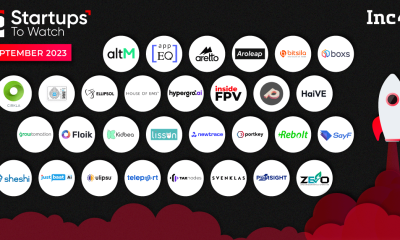Technology News
How AI can help detect cancer | Explained News

[ad_1]
Given the escalating cases of cancer, the shortage of specialists poses a significant challenge in curbing fatalities. To address this gap, Mumbai’s Tata Memorial Hospital (TMH), the biggest cancer hospital in India, is turning to artificial intelligence (AI).
By established a ‘Bio-Imaging Bank’ for cancer, the hospital is utilising deep learning to craft a cancer-specific tailored algorithm that aids in early-stage cancer detection. It incorporated data from 60,000 patients into the biobank in the last year.
Here is all you need to know about the project.
What is a ‘Bio-Imaging Bank’, and how does AI come into the picture?
The project’s overarching goal is to create a robust repository encompassing radiology and pathology images, intricately linked with clinical information, outcome data, treatment specifics, and additional metadata. This comprehensive resource is strategically designed for the training, validation, and rigorous testing of AI algorithms.
Initially focusing on head neck cancers and lung cancers, with a minimum of 1000 patients for each cancer type, the project aims to surpass the committed patient data for both cancer types by its completion date. Alongside database creation, the project involves training and testing multiple AI algorithms using the gathered data, addressing medically relevant tasks such as screening for lymph node metastases, nucleus segmentation and classification, biomarker prediction (for instance, HPV in oropharyngeal and EGFR in lung cancer), and therapy response prediction.
The multi-institutional project is funded by the Department of Biotechnology, in collaboration with IIT-Bombay, RGCIRC-New Delhi, AIIMS-New Delhi, and PGIMER-Chandigarh.
How does AI help in early cancer detection?
AI contributes significantly to cancer detection by emulating the human brain’s information processing. In cancer diagnosis, AI analyses radiological and pathological images, learning from extensive datasets to recognise unique features associated with various cancers. This technology facilitates early detection by identifying tissue changes and potential malignancies.
Dr Suyash Kulkarni, Head of Radiodiagnosis at TMC, explained how the team employs AI in radiology. Comprehensive imaging generates longitudinal patient data, aiding in understanding behaviour, treatment response, disease recurrence, and overall survival. AI and machine learning protocols utilise this data to develop predictive models for tumour survival and guide treatment aggressiveness.
The creation of a tumour image bank involves segmenting and annotating images, outlining tumours, identifying different features, and annotating them as malignant, inflammatory, or edematous. Biopsy results, histopathology, immunohistochemistry reports, and genomic sequences are correlated with images and clinical data to develop diverse algorithms.
This approach allows TMH to develop algorithms for different tumours, assess treatment responses directly from images, and avoid unnecessary chemotherapy for predicted non-responders, offering clinical utility. Leveraging the biobank, predictive and diagnostic models are developed using thousands of breast cancer images, undergoing AI and ML analysis with technical support from partners like IIT-Bombay.
Is this technology currently in use?
Yes. TMH has already added the data of 60,000 patients into the biobank over the previous year, started using AI to reduce radiation exposure for paediatric patients undergoing CT scans.
 Screengrab from a presentation on how AI autimatically detects cancer. (Credits: Tata Memorial Hospital)
Screengrab from a presentation on how AI autimatically detects cancer. (Credits: Tata Memorial Hospital)
“Through an innovative project, we’ve achieved a 40% reduction in radiation by enhancing images with artificial intelligence algorithms. This ensures a significant decrease in radiation exposure to children, maintaining diagnostic quality without compromise — an example of the impactful algorithms we aim to develop,” Dr Kulkarni said.
Also, on a pilot basis, the department is using a specific algorithm in the ICU for thoracic radiology, which focuses on imaging and diagnosing conditions related to the thoracic region of the body, specifically the chest area. The AI immediately provides a diagnosis, proven to be 98 percent correct after doctors cross-check.
“We are currently validating diverse artificial intelligence algorithms, such as the thoracic suit. This specialised tool interprets digital chest X-rays, identifying pathologies like nodules and pneumothorax. For instance, when an MRI is conducted in the ICU, the AI algorithm automatically provides a diagnosis, validated with our radiologists,” he said. “It aids in early diagnosis, saving time,” he added.
So, can AI help reduce cancer fatalities in the future?
In the future, AI is poised to play a transformative role in cancer treatment, particularly in mitigating fatalities in rural India. AI’s potential lies in tailoring treatment approaches based on diverse patient profiles, and thus optimising therapy outcomes.
Dr Sudeep Gupta, director of TMC envisions a future where AI, with a simple click, swiftly detects cancer, eliminating the need for extensive tests and enabling even general practitioners to diagnose complex cancers. This technology is poised to significantly enhance precision in cancer solutions. “Through continuous learning, AI enhances accuracy, ensuring timely cancer diagnoses, improving patient outcomes, and aiding healthcare professionals in decision-making processes,”he said.
However, the use of AI tools raises debates about potential replacement of human radiologists, facing regulatory scrutiny and resistance from some doctors and health institutions.
[ad_2]
Source link
Technology News
Circle to Search: Share part of your screen!

According to recent reports, Circle to Search, a feature introduced with the Samsung Galaxy S24 series in January 2024, might soon undergo an upgrade. Initially allowing users to copy text from selected areas, it’s now rumored to include the capability to capture and share screenshots of specific screen sections.
This enhanced functionality, observed in the latest version of Circle to Search, enables users to not only copy text but also capture and share screen images. A video shared by a tipster on X showcased this update, revealing new options of Copy and Share upon selecting an area. Even adjustments to the selected region don’t remove these options, ensuring a seamless experience. Users can either copy the image to the clipboard for further editing or share it directly through various apps.
Previously, the visual lookup feature solely facilitated text copying. While Android devices offer a three-finger swipe-down gesture for quick screenshots, it captures the entire screen, necessitating subsequent cropping. This new functionality streamlines the process, allowing users to select and share specific screen sections in just two steps.
Interestingly, Google recently addressed concerns about accidental activations of Circle to Search in a podcast featuring its developers. They acknowledged the issue and assured users of an impending fix. This indicates ongoing efforts to refine the feature for a smoother user experience.
Technology News
Discounted OnePlus Nord CE 3 price in India: Check it out!

The OnePlus Nord CE 3 has recently undergone another price reduction in India, marking a significant update for potential buyers. Initially introduced to the Indian market in June 2023, this smartphone received its first price adjustment in November of the same year. The base variant, featuring 8GB of RAM and 128GB of internal storage, was notably listed at a price Rs. 2,000 lower than its launch price, signaling OnePlus’s commitment to providing competitive pricing to its customers.
The OnePlus Nord CE 3 is powered by an octa-core Qualcomm Snapdragon chipset and ships with the Android 13-based operating system. It boasts a triple rear camera setup, enhancing its photography capabilities, and supports SuperVOOC charging, ensuring rapid replenishment of its battery. The inclusion of these features positions the Nord CE 3 as a compelling option for smartphone enthusiasts seeking a balance between performance, affordability, and innovation.
The recent unveiling of the OnePlus Nord CE 4 in India marks the continuation of OnePlus’s commitment to delivering cutting-edge technology to its users. Serving as the successor to the Nord CE 3, the Nord CE 4 is expected to build upon the strengths of its predecessor while introducing new enhancements and features to further elevate the user experience.
When considering the revised pricing of the OnePlus Nord CE 3, it’s evident that OnePlus aims to make its devices more accessible to a wider audience. The reduction in price, particularly on platforms like Amazon and the OnePlus India website, presents an opportunity for consumers to acquire a high-quality smartphone at a more affordable rate.
Let’s delve deeper into the specifications and features of the OnePlus Nord CE 3 to understand its capabilities and appeal to potential buyers.
OnePlus Nord CE 3 Price in India (Revised)
The base variant of the OnePlus Nord CE 3, featuring 8GB of RAM and 128GB of internal storage, was initially launched in India at Rs. 26,999. Following its first price cut in November, the price was reduced to Rs. 24,999. Now, the same variant is available on Amazon at Rs. 22,990, representing a Rs. 2,009 reduction from its previous price. Furthermore, customers can benefit from an additional flat Rs. 2,000 instant discount on ICICI and HDFC Bank cards, bringing the effective price down to Rs. 20,990.
On the OnePlus India website, the 8GB + 128GB variant is priced at Rs. 22,999, marking a Rs. 2,000 decrease from the November price of Rs. 24,999. It is worth noting that this discount is exclusively applicable to the 128GB model, as the higher-end 256GB variant is currently listed as out of stock.
OnePlus Nord CE 3 Specifications and Features
Display:
The OnePlus Nord CE 3 boasts a 6.7-inch full-HD+ fluid AMOLED display with a resolution of 1,080 x 2,412 pixels. With a refresh rate of up to 120Hz, users can enjoy smooth and fluid visuals, enhancing their overall viewing experience.
Processor and Performance:
Powered by the Qualcomm Snapdragon 782G SoC, the OnePlus Nord CE 3 delivers robust performance and efficient multitasking capabilities. With up to 12GB of RAM and up to 256GB of onboard storage, users can seamlessly navigate between apps and store their multimedia content with ease.
Operating System:
The smartphone ships with Android 13-based OxygenOS 13.1, providing users with a clean and intuitive user interface coupled with a plethora of customization options. OxygenOS is known for its smooth performance and timely software updates, ensuring that users stay up-to-date with the latest features and security patches.
Camera:
The OnePlus Nord CE 3 features a versatile camera setup, comprising a 50-megapixel primary sensor with optical image stabilization (OIS) and electronic image stabilization (EIS) support. Accompanying this primary sensor is an 8-megapixel sensor with an ultra-wide-angle lens and a 2-megapixel macro shooter, allowing users to capture a wide range of subjects with stunning detail and clarity. On the front, the device houses a 16-megapixel sensor for high-quality selfies and video calls.
Battery and Charging:
Equipped with a robust 5,000mAh battery, the OnePlus Nord CE 3 offers ample battery life to power through a full day of usage. Additionally, the device supports 80W wired SuperVOOC charging, enabling users to quickly replenish the battery and minimize downtime.
Connectivity:
The OnePlus Nord CE 3 supports a comprehensive range of connectivity options, including 5G, 4G LTE, Wi-Fi, Bluetooth 5.2, NFC, GPS, and USB Type-C. Whether it’s streaming multimedia content, browsing the web, or staying connected with friends and family, users can rely on the Nord CE 3 to deliver seamless connectivity and performance.
Security:
For enhanced security, the OnePlus Nord CE 3 features an in-display fingerprint sensor, allowing users to conveniently unlock their device with a simple touch. This biometric authentication method adds an extra layer of protection to safeguard sensitive data and personal information.
Conclusion
In conclusion, the OnePlus Nord CE 3 offers a compelling combination of performance, affordability, and innovation, making it an attractive choice for smartphone enthusiasts in India. With its recent price reduction and competitive specifications, the Nord CE 3 presents a compelling value proposition for consumers seeking a high-quality smartphone experience without breaking the bank. As OnePlus continues to innovate and introduce new features with each iteration, the Nord CE 3 stands as a testament to the company’s commitment to delivering exceptional devices tailored to the needs of its users.
Technology News
Namma Yatri launches cab service in Bengaluru

In its largest market, Bengaluru, ride-hailing company Namma Yatri has expanded its services to include cab-hailing, marking a significant shift from its previous focus on auto rickshaws. Namma Yatri, known for pioneering a daily subscription model as opposed to the commission-based model utilized by competitors like Ola and Uber, had initially concentrated on auto rickshaws in Bengaluru. However, it now features a distinct section on its app dedicated to booking cabs in the city. Additionally, Namma Yatri already provides cab rides in Kochi and Kolkata.
The decision to venture into cab services follows Namma Yatri’s separation from its former parent company, Justpay, and comes on the heels of a reported expansion plan announced on April 1st. The move also aligns with the broader trend observed in the industry, as both Ola and Uber have recently introduced subscription-based plans for auto-rickshaw drivers on their platforms. This strategic shift towards subscription-based models, akin to Namma Yatri’s approach, as well as that of Rapido, highlights a growing preference within the industry for alternative pricing structures beyond traditional booking fees or commissions.
-

 Startup Stories1 year ago
Startup Stories1 year agoWhy Millennials, GenZs Are Riding The Investment Tech Wave In India
-

 Startup Stories1 year ago
Startup Stories1 year agoStartups That Caught Our Eyes In September 2023
-

 Startup Stories1 year ago
Startup Stories1 year agoHow Raaho Is Using Tech To Transform India’s Fragmented Commercial Trucking
-

 Startup Stories1 year ago
Startup Stories1 year agoMeet The 10 Indian Startup Gems In The Indian Jewellery Industry’s Crown
-

 Startup Stories1 year ago
Startup Stories1 year agoWOW Skin Science’s Blueprint For Breaking Through In The $783 Bn BPC Segment
-

 Crptocurrency11 months ago
Crptocurrency11 months agoLither is Making Crypto Safe, Fun, and Profitable for Everyone!
-

 Startup Stories1 year ago
Startup Stories1 year agoHow Volt Money Is Unlocking The Value Of Mutual Funds With Secured Lending
-

 E-commerce1 year ago
E-commerce1 year agoTop Online Couponing Trends To Watch Out For In 2016






